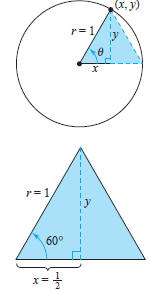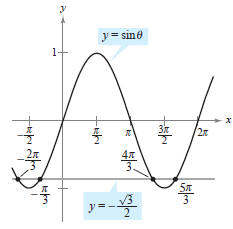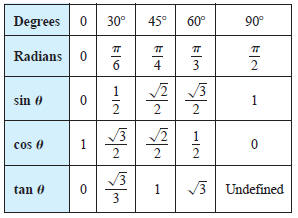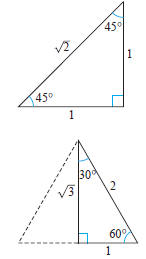- Home
- INTERMEDIATE ALGEBRA
- Course Syllabus for Algebra I
- Mid-Plains Community College
- FRACTION OF A WHOLE NUMBER
- Systems of Linear Equations
- MATH FIELD DAY
- Course Outline for Finite Mathematics
- Calculus
- Algebra Final Examination
- Math 310 Exam #2
- Review of Trigonometric Functions
- Math 118 Practice test
- Precalculus Review
- Section 12
- Literal Equations
- Calculus Term Definitions
- Math 327A Exercise 2
- Public Key Algorithms II
- Maximizing Triangle Area
- Precalculus I Review for Midterm
- REVIEW OF A FIRST COURSE IN LINEAR ALGEBRA
- Math 6310 Homework 5
- Some Proofs of the Existence of Irrational Numbers
- ALGEBRAIC PROPERTIES OF MATRIX OPERATIONS
- Math 142 - Chapter 2 Lecture Notes
- Math 112 syllabus
- Math 371 Problem Set
- Complex Numbers,Complex Functions and Contour Integrals
- APPLICATIONS OF LINEAR EQUATIONS
- Week 4 Math
- Fractions
- Investigating Liner Equations Using Graphing Calculator
- MATH 23 FINAL EXAM REVIEW
- Algebra 1
- PYTHAGOREAN THEOREM AND DISTANCE FORMULA
- Georgia Performance Standards Framework for Mathematics - Grade 6
- Intermediate Algebra
- Introduction to Fractions
- FACTORINGS OF QUADRATIC FUNCTIONS
- Elementary Algebra Syllabus
- Description of Mathematics
- Integration Review Solutions
- College Algebra - Applications
- A Tip Sheet on GREATEST COMMON FACTOR
- Syllabus for Elementary Algebra
- College Algebra II and Analytic Geometry
- Functions
- BASIC MATHEMATICS
- Quadratic Equations
- Language Arts, Math, Science, Social Studies, Char
- Fractions and Decimals
- ON SOLUTIONS OF LINEAR EQUATIONS
- Math 35 Practice Final
- Solving Equations
- Introduction to Symbolic Computation
- Course Syllabus for Math 935
- Fractions
- Fabulous Fractions
- Archimedean Property and Distribution of Q in R
- Algebra for Calculus
- Math112 Practice Test #2
- College Algebra and Trigonometry
- ALGEBRA 1A TASKS
- Description of Mathematics
- Simplifying Expressions
- Imaginary and Complex Numbers
- Building and Teaching a Math Enhancement
- Math Problems
- Algebra of Matrices Systems of Linear Equations
- Survey of Algebra
- Approximation of irrational numbers
- More about Quadratic Functions
- Long Division
- Algebraic Properties of Matrix Operation
- MATH 101 Intermediate Algebra
- Rational Number Project
- Departmental Syllabus for Finite Mathematics
- WRITTEN HOMEWORK ASSIGNMENT
- Description of Mathematics
- Rationalize Denominators
- Math Proficiency Placement Exam
- linear Equations
- Description of Mathematics & Statistics
- Systems of Linear Equations
- Algebraic Thinking
- Study Sheets - Decimals
- An Overview of Babylonian Mathematics
- Mathematics 115 - College Algebra
- Complex Numbers,Complex Functions and Contour Integrals
- Growing Circles
- Algebra II Course Curriculum
- The Natural Logarithmic Function: Integration
- Rational Expressions
- QUANTITATIVE METHODS
- Basic Facts about Rational Funct
- Statistics
- MAT 1033 FINAL WORKSHOP REVIEW
- Measurements Significant figures
- Pre-Calculus 1
- Compositions and Inverses of Functions
Review of Trigonometric Functions
| Trigonometric Identities [Note that sin2θ is used to represent (sinθ)2.] | ||||
| Pythagorean Identities: | Reduction Formulas: | |||
 |
||||
| Sum or Difference of Two Angles: | Half–Angle Formulas: | Double–Angle Formulas: | ||
 |
||||
| Law of Cosines: | Reciprocal Identities: | Quotient Identities: | ||
 |
||||
|
Evaluating Trigonometric Functions There are two ways to evaluate trigonometric functions: (1) decimal approximations with a calculator (or a table of trigonometric values) and (2) exact evaluations using trigonometric identities and formulas from geometry. When using a calculator to evaluate a trigonometric function, remember to set the calculator to the appropriate mode—degree mode or radian mode. EXAMPLE 2 Exact Evaluation of Trigonometric Functions |
|

The angle π/3 in standard position
|
Evaluate the sine, cosine, and tangent of π/3. Solution Begin by drawing the angle  in standard position, as shown in
in standard position, as shown inFigure D.32. Then, because  radians,
you can draw an equilateral triangle radians,
you can draw an equilateral trianglewith sides of length 1 and θ as one of its angles. Because the altitude of this triangle bisects its base, you know that  Using
the Pythagorean Theorem, you obtain Using
the Pythagorean Theorem, you obtain
Now, knowing the values of x, y, and r, you can write the following.
NOTE All angles in this text are measured in
radians unless stated otherwise. For example, Common First Quadrant Angles
The quadrant signs for the sine, cosine, and
tangent functions are shown in Figure
Similarly, because the reference angle for 330° is
30° and the tangent is negative in
Figure D.35 |
|
Common angles
|
|

Quadrant signs for trigonometric functions |
|
| EXAMPLE 3 Trigonometric Identities and Calculators | |
|
Evaluate the trigonometric expression.
Solution
b. Using the reciprocal identity
c. Using a calculator, you can obtain
Remember that 1.2 is given in radian measure.
Consequently, your calculator must Solving Trigonometric Equations
You can write this infinite solution set as is { nπ :n an integer } |
| EXAMPLE 4 Solving a Trigonometric Equation | |
 Solution
points of
|
Solve the equation
Solution To solve the equation, you should
consider that the sine is negative in
Thus, you are seeking values of θ in the
third and fourth quadrants that have a reference
By adding integer multiples of 2π to each of these
solutions, you obtain the following
(See Figure D.36.) |





 we mean the sine
we mean the sine





 you can write
you can write
 you can write
you can write

 ? You know
that
? You know
that
 is one solution,
is one solution,



 ,the two
angles fitting these criteria are
,the two
angles fitting these criteria are and
and

 ,where n is an
integer.
,where n is an
integer.